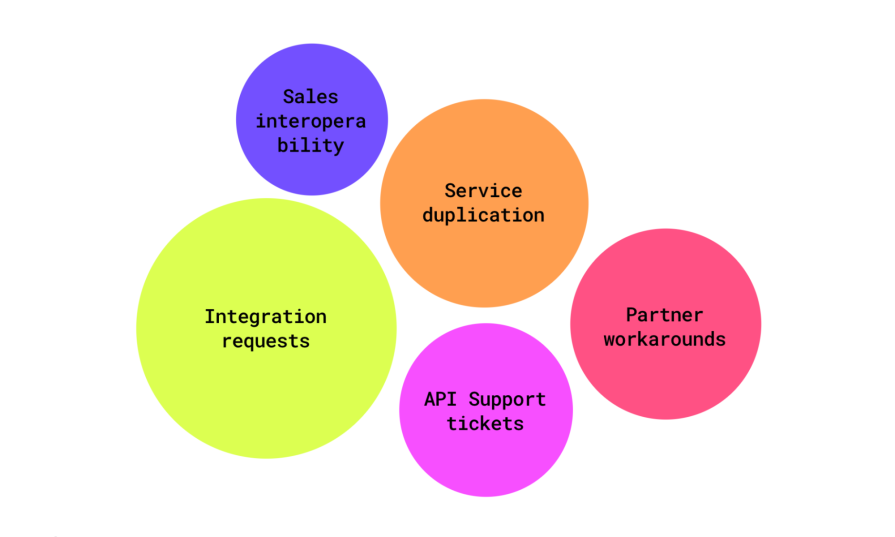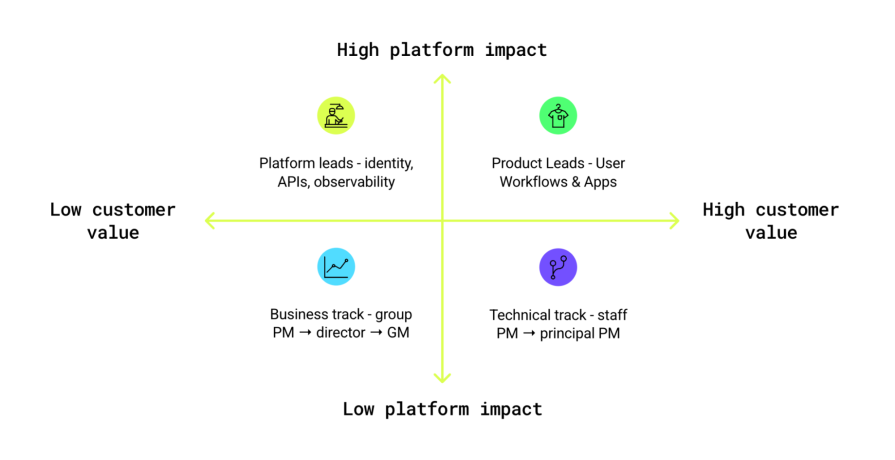Leading the transition from product to platform
Every successful SaaS product begins with a clear purpose. It solves a problem elegantly, serves a need efficiently, or automates a task that once required hours of attention. Over time, the role it plays begins to evolve.
Customers no longer view it only as a tool. They start seeing it as a building block. New kinds of questions begin to appear in feedback forms and sales conversations:
- “Can this connect with our internal system?”
- “Does this integrate with the tools we already use?”
- “Can our engineers access the backend or API?”
These questions signal a shift in how your customers perceive value. They point to a transition, from product to infrastructure. Inside that shift lies a specific opportunity: the platform.
The transformation begins with recognition, long before any new code is written. Not every product evolves into a platform, however many products carry the foundations for one. These foundations often live inside internal systems already serving multiple purposes.
And when you identify these, you can expand the scope of your product into a full fledged platform. To help get you started, this article walks you through the process, explains common mistakes, and supplies you with worksheets that’ll guide you to success.
Signals that suggest platform potential
Strong platforms tend to reveal themselves through patterns of behavior. These signals, observed repeatedly across teams and markets, often appear together. Look for the following signs:
- A significant share of product feedback focuses on integration requests, external data access, or system interoperability
- Internal teams rebuild similar components, authentication, billing, notifications, across different applications
- Partners interact with internal systems using unofficial methods: screen scraping, undocumented endpoints, or reverse-engineered APIs
- Sales cycles turn toward interoperability requirements, and win rates increase when integrations already exist
- Support tickets center on API usage, webhooks, retries, and data reliability
These signals tell you that customers and partners are building around the product. That moment marks the beginning of platform leadership.
Identifying and defining the platform core
Many platforms emerge from elevating services that exist beneath the surface. The platform core usually consists of services already in use, internally duplicated, externally requested, or structurally central to workflows.
The objective is to identify which services are best positioned for externalization. These questions guide that choice:
- Does the service appear across multiple internal teams?
- Does it provide clear value to customers or partners if exposed?
- Will external access support strategic use cases while preserving system integrity?
Services such as identity management, role-based permissions, file processing, and event logging often fit these criteria. Some remain internal by design. Their value lies in performance, resilience, or uniqueness.
Externalization requires discipline. APIs alone don’t create platforms. Interfaces function as contracts. These contracts define expectations. And those expectations then become the experience.
Each external service should include:
- Uptime guarantees
- Defined latency budgets and usage ceilings
- Versioning commitments and migration paths
- Monitoring, logs, and diagnostic tools for external developers
At one workflow automation company, enterprise clients began asking for ways to trigger automations from internal systems. These requests weren’t feature requests. They were indicators of ecosystem ambition.
The team consolidated services like event triggers, permissions, and audit logs. After internal consistency was reached, these were exposed through well-defined APIs.
Partner integrations quickly outpaced the internal roadmap. The platform emerged through use. Leadership then brought it into focus and made it usable.
Planning platform interfaces like infrastructure
Early platform design requires infrastructure-level care. Product documents should describe not only functionality but also behavior under pressure, degradation protocols, observability pipelines, and escalation paths.
Core elements of an early platform interface include:
- Rate limit enforcement policies
- Incident protocols with defined responsibilities
- Versioning strategies with forward and backward compatibility
- Deprecation paths and recovery procedures
These foundations signal maturity. They allow partners to build confidently, reduce support dependency, and create trust.
Pricing with scale and sustainability in mind
A platform grows by supporting the growth of others. Pricing becomes one of its most effective instruments. The right pricing structure aligns value delivery with customer expansion and partner success.
Three pricing models offer different dynamics:
- Seat-based pricing — Fits collaborative platforms where user growth mirrors value creation
- Usage-based pricing — Serves developer tools, APIs, and data services. Aligns cost with consumption
- Value-based pricing — Ties cost to measurable outcomes; revenue, transactions, or savings. Works well for embedded systems and transactional platforms
A single model might not serve all segments equally. Testing pricing through cohort sensitivity analysis often reveals margin pressure early.
One company offered a generous free tier to grow adoption. Usage expanded, and infrastructure costs followed. Adjustments introduced progressive pricing thresholds and access tiers. This structure welcomed experimentation and supported long-term margin strength.
Pricing signals include:
- Margin per API call
- Revenue per integrated account
- Developer activation and retention rates
- Customer value attributed to integrations
Well-structured pricing turns growth into sustainability, guides product design, and supports ecosystem maturity.
Designing the platform product organization
Platform growth requires teams with systems thinking. Product leaders must build for extensibility, consistency, and reliability. The organization must support reuse while enabling differentiated experiences.
A matrix structure often performs well:
- Horizontal PMs manage shared services, interfaces, and documentation
- Vertical PMs focus on applications, workflows, and use-case delivery
Career growth should reflect both technical depth and business ownership:
- Technical leadership — Staff and principal PMs focused on APIs, architecture, and developer tooling
- Business leadership — Group PMs and directors aligned with business units, partner adoption, and module growth
Key metrics include:
- Net dollar retention (NDR)
- Attachment rate
- Time to first integration
- Developer NPS
At one company, the team introduced CLI tooling and tailored onboarding guides. The result was faster developer activation, a shorter integration timeline, and a measurable rise in partner satisfaction.
Launching and nurturing the ecosystem
A platform transitions into an ecosystem when external builders begin to thrive. Their success reflects the strength of the foundation. Structured support accelerates this process.
Elements that build confidence:
- Partner portals with analytics, keys, and diagnostics
- Sandbox environments for experimentation
- Certification programs with tiered rewards
- Revenue-sharing frameworks with aligned incentives
- SDKs and reference applications in supported languages
Visibility also matters. Partner success happens when you invite others into the fold. Campaign calendars, newsletters, events, or product spotlights build momentum and make partner success visible.
Avoiding common platform mistakes
Every transition involves friction, however you want to watch out for these common mistakes:
- Surface area expansion before interface stability
- Internal tooling gaps that slow external developer workflows
- Custom partner deals that increase billing and support complexity
Each internal tool reflects externally. When internal teams trust and rely on the platform, external builders follow.
Mikal Lewis at Nordstrom addressed hidden bugs, “cockroaches,” that limited partner growth. His teams prioritized root-cause resolution and internal trust. This created a base for recommendation engines across retail products.
Ben Newell at Miovision introduced the phrase “The team is the product.” This reframing influenced internal incentives, external integrations, and opened the platform to traffic-based insights across logistics, insurance, and urban systems.
Worksheets to guide the transition
To help you through your transition, I created two easy to use Google Sheets:
- Platform readiness diagnostic — Use this to assess infrastructure readiness, internal reuse, and developer support maturity
- Pricing and margin modeling template — Plan pricing across tiers, evaluate partner contribution, and model margin health by segment
Final thoughts
Platforms grow through care and clarity. They reward trust and invite participation, and the strongest ones begin with reuse, mature through reliable access, and endure through partner success.
Inside many products lives a durable platform. That potential becomes visible through patterns of use, developer behavior, and partner ambition. Leading the transition turns those patterns into structure, structure into commitment, and commitment into momentum.
The foundation already exists. What matters now is your discipline to shape it.
Featured image source: IconScout
The post Leading the transition from product to platform appeared first on LogRocket Blog.
This post first appeared on Read More




